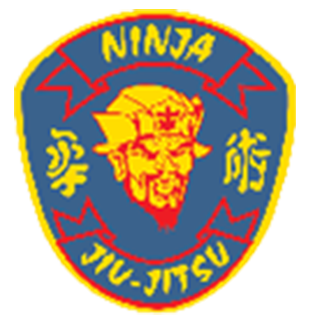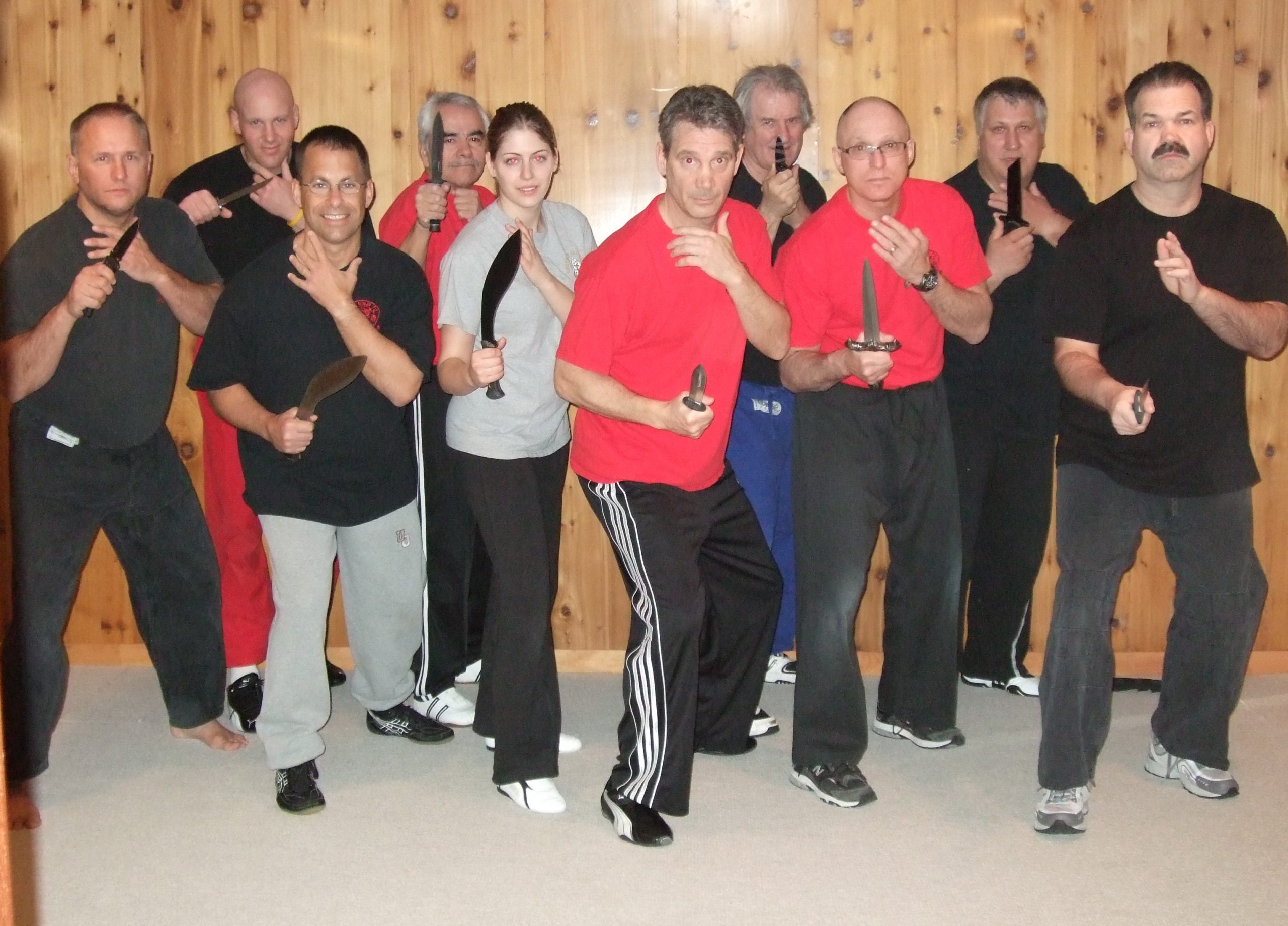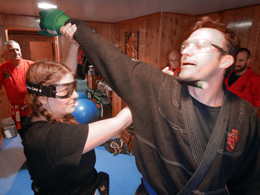
Ninja-Ryu
We practice an eclectic and open style of Jiu-Jitsu that combines an appreciation of the traditional martial arts while benefiting from 21st century training methods. In practice our philosophy is to use what works while employing the principles of honour, discipline, respect and friendship.
We are lucky enough to live in an era where we can easily access knowledge from a variety of media. By drawing on many sources we have had the opportunity to compliment and improve our Jiu-Jitsu base. Also, our Black Belts have traveled extensively, bringing back skills that are integrated into our training. The following arts have had an influences on our stand-up striking techniques: boxing, Muay Thai, Wing-Chun and karate. To supplement our repertoire of grappling and defense techniques we have also added skills from Hapkido and wrestling.



